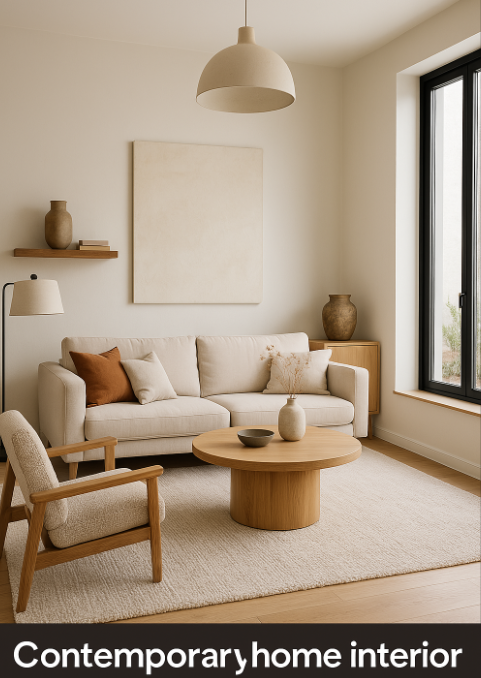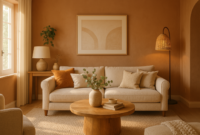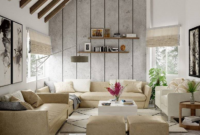Contemporary Home Interior
In the modern era, the concept of home has transformed from being a purely functional space into a sanctuary that reflects personality, lifestyle, and well-being. Contemporary home interior design stands at the forefront of this transformation, combining aesthetics, comfort, and practicality in an ever-evolving fusion of styles and innovations. Characterized by simplicity, subtle sophistication, clean lines, and purposeful use of texture and space, contemporary interiors offer a fresh take on what it means to live stylishly today.
A Philosophy of Modern Living
Contemporary design isn’t just a trend—it’s a philosophy. At its core, it celebrates the present, drawing inspiration from current architectural and cultural influences. Unlike traditional or even modern design (which has roots in early 20th-century styles), contemporary design is fluid, adapting to the needs and tastes of the moment. It emphasizes open spaces, natural light, and the strategic use of materials like glass, metal, and wood.
This design ethos supports mindful living. By reducing clutter and focusing on essential elements, contemporary interiors create a calming environment. Minimalism doesn’t mean stark or boring—it means being intentional. Every piece of furniture or decor serves a purpose, whether functional or aesthetic.
The Foundation: Layout and Space
One of the defining features of contemporary home interiors is the open floor plan. Walls are minimized to encourage a flow between spaces. The kitchen, living, and dining areas often merge into one cohesive zone, fostering a sense of togetherness and making smaller spaces feel larger.
Strategic use of space is vital. Storage solutions are seamlessly integrated—think built-in shelving, under-stair drawers, and concealed cabinetry. Furniture is chosen with versatility in mind, like modular sofas, expandable dining tables, or ottomans that double as storage units. Space is not just used; it’s optimized.
Light: Natural and Artificial Harmony
Natural light plays a pivotal role in contemporary interiors. Large, unadorned windows are a staple, often stretching from floor to ceiling, flooding rooms with daylight. This connection to the outdoors creates an airy, uplifting atmosphere and enhances the perception of space.
Artificial lighting complements this, often layered for functionality and ambiance. Recessed ceiling lights, pendant fixtures, and track lighting offer sleek alternatives to traditional chandeliers. Accent lighting—under-cabinet LEDs or spotlighting for artwork—adds drama and depth. Smart lighting systems are increasingly popular, allowing residents to adjust brightness and color temperature to suit their mood or activity.
Color Palette: Neutrals with Intentional Contrast
The contemporary color palette leans heavily on neutrals—whites, beiges, grays, and blacks provide a calm, timeless foundation. However, the real magic lies in contrast and accent. A stark black trim on a white wall, a bold navy feature wall in an otherwise soft-toned room, or pops of color through art and accessories keep the look dynamic.
Earth tones are also making a resurgence in contemporary spaces. Rust, olive green, terracotta, and ochre introduce warmth and a connection to nature, aligning with the broader trend of biophilic design.
Materials and Textures: Layering the Experience
While the color palette might be subdued, contemporary interiors shine through the interplay of materials and textures. Smooth, glossy surfaces like polished concrete, lacquered cabinets, and glass are balanced by tactile elements like woven rugs, wool throws, or reclaimed wood.
This layering creates visual interest without overwhelming the senses. Metal fixtures—especially in matte black or brushed gold—add a modern edge, while natural stone countertops and wooden accents bring in organic charm.
Sustainability is increasingly central to material choices. Recycled, locally-sourced, and eco-friendly products are favored by designers and homeowners alike. This not only supports the environment but also contributes to a healthier indoor atmosphere.
Furniture: Sleek, Functional, Comfortable
Contemporary furniture design follows the mantra “form follows function.” Clean lines, smooth edges, and geometric shapes dominate. Pieces often have low profiles and are designed to maximize comfort without bulkiness.
Upholstery leans toward durable yet luxurious fabrics—think leather, velvet, or performance-grade weaves that withstand daily use. Furniture may include smart features, such as built-in charging ports or modular arrangements that can adapt to changing needs.
One common misconception is that contemporary interiors lack personality. In reality, furniture pieces often act as focal points. A uniquely shaped chair, a sculptural coffee table, or an oversized floor lamp can serve as conversation starters and centerpieces of creativity.
Art and Decor: The Soul of the Space
Art plays a significant role in contemporary interiors. Large-scale abstract paintings, sculptural pieces, or mixed-media works reflect the homeowner’s personality and add character to a clean-lined environment. The emphasis is on curation—each item is chosen with intention, not just for decoration but for expression.

Decor items follow the same principles. A ceramic vase with a rough-hewn finish, a cluster of hand-blown glass pendants, or a simple stack of art books on a coffee table can transform a space. Plants are another must-have—they not only beautify but also purify the air and contribute to a sense of well-being.
Mirrors are cleverly used to reflect light and expand visual space, especially in smaller apartments or townhomes. Their frames—whether minimalist, industrial, or ornate—add another layer of design without adding clutter.
The Smart Home Integration
Technology has found a natural home in contemporary design. Today’s interiors are often built around smart home systems that control lighting, temperature, security, and entertainment. These features are not just practical; they’re integrated seamlessly, often through voice command or mobile apps.
Appliances in contemporary homes are sleek, energy-efficient, and often hidden behind cabinetry for a streamlined appearance. Charging stations, wireless hubs, and other tech elements are incorporated subtly to maintain a clean aesthetic.
Contemporary Kitchens and Bathrooms
The kitchen in a contemporary home is both a workspace and a social hub. It boasts streamlined cabinetry, high-end appliances, and durable yet stylish surfaces like quartz or granite. Islands often serve dual purposes—meal prep and casual dining. Open shelving, matte finishes, and minimal hardware define the look.
In the bathroom, spa-like ambiance takes center stage. Frameless glass showers, floating vanities, and freestanding tubs contribute to a sense of luxury. Neutral tiles are layered with texture—subway tiles, hexagon mosaics, or stone cladding. Modern faucets and fixtures, often in matte black or brushed nickel, complete the aesthetic.
Personalization and Evolving Trends
While the contemporary style has key characteristics, it’s far from rigid. The beauty of this design lies in its adaptability. As lifestyles and preferences change, so too does the design. Personal touches—family heirlooms, travel souvenirs, or handmade crafts—are seamlessly integrated, adding warmth and individuality.
Current trends within contemporary design include the Japandi aesthetic (a blend of Japanese minimalism and Scandinavian functionality), the return of curved furniture, and the use of sustainable or recycled materials. There’s also a growing appreciation for maximalism within a contemporary framework—layering bold patterns and textures while maintaining cohesion through color and proportion.
Designing for Wellness
In recent years, the concept of “wellness design” has influenced contemporary interiors. This approach considers how space affects mental and physical health. It encourages natural light, proper ventilation, acoustic comfort, and the integration of nature through plants and natural materials.
Home offices, once an afterthought, are now integral to design plans, with ergonomic furniture, soundproofing, and calming aesthetics. Bedrooms are created as true retreats, with soothing palettes, blackout curtains, and technology-free zones.
The Future of Contemporary Interiors
As we look ahead, the contemporary home will continue to evolve in response to technological advances, environmental challenges, and cultural shifts. Artificial intelligence, augmented reality, and sustainable innovations are already influencing design decisions.
Yet the essence of contemporary interior design will remain unchanged: a deep commitment to creating spaces that enhance daily life. It’s not about following fads but about crafting an environment that supports productivity, rest, connection, and joy.


